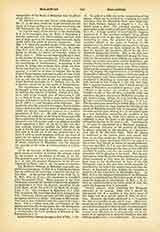

Majordomo (Latin, Major domus; Italian, Maggiordomo).—The majordomo or chief steward of the household of the pope is one of the three (formerly four) palatine prelates (prelati palatini), concerning whom particulars have been given in the article Maestro di Camera del Papa. He belongs also to the four “prelati di flocchetto”, so called because they have the right to ornament the harness of their horses with violet and peacock-colored feathers. The four prelates di ftocchetto are, first the Governor of Rome in his quality of Vice-Chamberlain, and after him the Auditor and the Treasurer of the Apostolic Chamber, and then comes the Major-domo. In the “Introitus et Exitus Camerae Apostolicae” of the Vatican Archives, which begins with the year 1295, the officials of the Apostolic Household are given in regular order according to their stipends. But, although even at this date there undoubtedly existed a supreme steward of the papal palace, the name and duties attached to the office of a majordomo were not strictly defined until later. The alterations in the domestic administration of the papal household, necessitated under Clement V and John XXII by the transition from the “natural economy” to the “economy of money”, were of a far-reaching nature; but it was only after the return of Martin V from Avignon in 1418 that the present offices were gradually evolved, to attain subsequently during the Renaissance a full development. In the sixteenth century a maestro di casa stood at the head of the whole administration of the papal household. Towards the end of that century the same official was accorded the title of prefetto del Sacro Palazzo Apostolico, and under Urban VIII (1623-44) he was first granted the title of Maggiordomo Pontificio. It was then his duty, on the accession of a new pope, to form the papal famiglia, that is, to suggest candidates for the various household offices and then to direct the whole household. In so far as this duty necessitated expenditure, the Treasurer of the Holy Roman Church, the minister of finance for the time being, exercised sharply defined control over the majordomo and his assistants. This circumstance did not, however, constitute the treasurer a household official, or the Prrefectus Sacri Palatii an administrative official; the Majordomo is, and has always been, exclusively a household official. A complete list of the occupants of the office from 1534 is preserved. The general rule recognized by the Curia at the close of the Middle Ages, that the head of any important department should have jurisdiction over all his assistants, extended to the Majordomo. Not merely in civil matters, but likewise in criminal charges, sedebat pro tribunali—he pronounced judgment on all officials of the papal palace. In the course of time his duties as majordomo were sharply distinguished from those which he performed as Prefect of the Palace, so that the majordomo was said to be simultaneously Prefect of the Palace. To the prefecture belonged the management of the museums and of all establishments of a special kind existing in the palaces—provided they were not autonomous. The keeping of the palace accounts also fell to the prefect.
After 1870 there was a great change in these conditions. The important office of the prefect was separated from that of the majordomo, and entrusted to the commission of cardinals appointed to administer the business affairs of the Holy See. The arrangement of Leo XIII was so far altered by Pius X, that the Secretary of State was made Prefect of the Apostolic Palaces. Subordinate to him are the sub-prefect, the forriere maggiore, the cavallerizzo maggiore, the segreteria della prefettiora, the computisteria, the architetto and the juristic counsellors, who form, in their corporate capacity, the divisional boards of direction of the palace administration. The museums and galleries are also entrusted to this body. The above-mentioned alteration by Leo XIII took place on December 29, 1891, after the prefecture had been separated by a Motus proprius of December 7 The present rights of the Majordomo are briefly as follows: He enjoys his old privilege of accompanying His Holiness, and remains Governor of the Conclave. In this capacity he has the general control of the personnel of the palaces, and is responsible for the quiet and good order therein during the Conclave. In the Congresso Palatino (Palatine Commission), should it be hereafter convened, he has a seat and a vote. He conducts the Congregation of the Apostolic Hospice, and is director of the Cappella Sistina, the musical direction of which is (1910) entrusted to Maestro Perosi. All ordinary and extraordinary religious functions, in which the pope and papal court participate, are under his arrangement and direction. The appointments of papal chamberlains are forwarded by him at the pope’s order, and he distributes the annual medals to the members of the papal household. His earlier duty of issuing cards of admission to the galleries and museums for purposes of study and copying is now withdrawn from him. The Majordomo is the chief Prelate of the Household, has a distinctive dress, and enjoys a free official residence in the papal palace.
PAUL MARIA BAUMGARTEN

